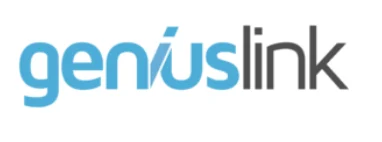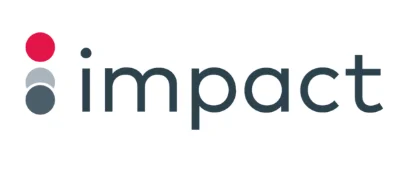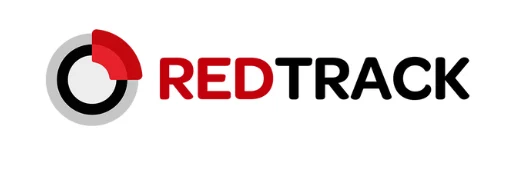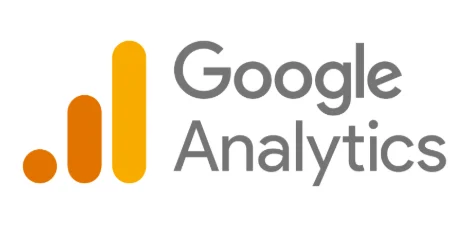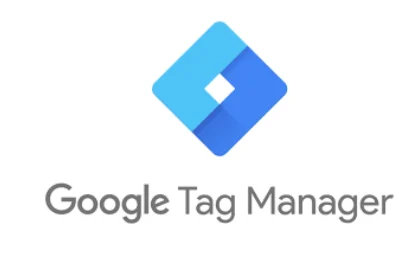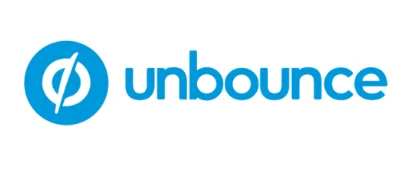Affiliate marketing is no longer a side hustle, it is now a global industry worth $15.7 billion in 2024 and still growing. With 81% of brands and 84% of publishers actively involved, competition is tougher than ever. If you want to succeed, you must equip yourself with the right affiliate marketing tools at every stage of your journey.
This guide gives you 20 essential tools that I recommend from years of affiliate project management experience. Think of it as a roadmap. Each tool solves a blocker you will face, from niche research to scaling campaigns.
Why Affiliate Marketing Tools Are Essential
Affiliate marketing looks simple, but in reality, it is full of challenges. Without tools, you waste months guessing what works. With tools, you gain speed, clarity, and better results.
- Research stage: find profitable trends before others.
- Building stage: launch SEO-friendly websites.
- Monetization stage: maximize clicks and sales.
- Scaling stage: track, test, and automate.
- Compliance stage: stay legal and protect your brand.
Let’s walk through the tools step by step.
Stage 1: Discovering Profitable Niches and Keywords
1. Google Trends
Google Trends shows if a topic is rising, steady, or fading. For affiliates, this prevents wasting time on dead niches.
Key Details:
- Feature: Search volume trends
- Best Use: Early niche validation
- Pricing: Free
- Pros: Simple, fast, visual
- Cons: Only shows Google data
2. Semrush
Semrush has 27.3 billion keywords in its database. I use it to find keyword gaps, cluster topics, and run site audits to improve rankings.
Key Details:
- Feature: Keyword research, site audits
- Best Use: SEO planning and competitor analysis
- Pricing: Free + Paid plans
- Pros: Huge keyword database, strong reporting
- Cons: Learning curve for beginners
3. Ahrefs
Ahrefs is famous for backlink analysis. It helps me find “content gaps” and authority-building opportunities.
Key Details:
- Feature: Backlink data, keyword explorer
- Best Use: Link building and SEO research
- Pricing: Paid (plans from ~$99/month)
- Pros: Excellent backlink index
- Cons: Expensive for beginners
Stage 2: Building a Website and Optimizing SEO
4. WordPress
WordPress powers over 40% of the web. It is flexible, easy to customize, and full of plugins for affiliates.
Key Details:
- Feature: Website CMS
- Best Use: Building affiliate websites
- Pricing: Free (hosting extra)
- Pros: Plugins, flexibility
- Cons: Needs setup and updates
5. Rank Math
Rank Math is my go-to SEO plugin. It adds schema, analyzes content, and improves rankings faster.
Key Details:
- Feature: SEO optimization plugin
- Best Use: On-page SEO
- Pricing: Free + Pro
- Pros: Easy to use, schema support
- Cons: Some features locked in Pro
Stage 3: Content Creation and Optimization
6. Surfer SEO
Surfer SEO builds SEO-friendly outlines and suggests NLP keywords. It makes writing content much faster.
Key Details:
- Feature: Content optimization
- Best Use: Blog posts, reviews
- Pricing: Paid
- Pros: Easy briefs, NLP suggestions
- Cons: Monthly cost
7. Canva
With over 240 million users, Canva is the design tool I use for blog images, charts, and social media posts.
Key Details:
- Feature: Graphic design platform
- Best Use: Blog visuals, ads
- Pricing: Free + Pro
- Pros: Drag-and-drop design
- Cons: Premium images cost extra
Stage 4: Monetization and Link Management
8. Lasso
Lasso creates affiliate product boxes that look professional and boost conversions.
Key Details:
- Feature: Product displays and link management
- Best Use: Reviews and comparison posts
- Pricing: Paid (~$29/month)
- Pros: Auto price updates, clean design
- Cons: WordPress only
9. Pretty Links
Pretty Links shortens and cloaks affiliate links. It also tracks performance.
Key Details:
- Feature: Link cloaker and tracker
- Best Use: Managing affiliate links
- Pricing: Free + Pro
- Pros: Easy to use
- Cons: Limited reporting
10. Geniuslink
Geniuslink helps affiliates with global audiences by redirecting users to the right store.
Key Details:
- Feature: Smart link routing
- Best Use: International audiences
- Pricing: Paid (usage-based)
- Pros: Boosts conversions worldwide
- Cons: Costs rise with clicks
11. Impact.com
Impact.com is a large affiliate platform for discovering programs and managing earnings.
Key Details:
- Feature: Affiliate network and tracking
- Best Use: Scaling partnerships
- Pricing: Varies
- Pros: Large partner base
- Cons: Dashboard complexity
Stage 5: Tracking and Analytics
12. RedTrack
RedTrack tracks paid campaigns accurately with server-to-server (S2S) attribution.
Key Details:
- Feature: Ad and affiliate tracker
- Best Use: Paid campaigns
- Pricing: Paid
- Pros: Privacy-ready, automations
- Cons: Paid-only
13. Google Analytics 4
GA4 is installed on 45.8% of websites. It helps track traffic, conversions, and funnels.
Key Details:
- Feature: Analytics tool
- Best Use: Website tracking
- Pricing: Free
- Pros: Market leader, deep data
- Cons: New GA4 interface takes learning
14. Google Tag Manager
GTM allows you to manage all tracking pixels without editing code.
Key Details:
- Feature: Tag deployment
- Best Use: Multi-channel campaigns
- Pricing: Free
- Pros: Saves developer time
- Cons: Learning curve
15. Hotjar
Hotjar gives heatmaps and user recordings to improve conversions. It is used by 2.3% of all websites.
Key Details:
- Feature: UX insights, heatmaps
- Best Use: Conversion optimization
- Pricing: Free + Paid
- Pros: Visual user behavior
- Cons: Limited large-scale data
Stage 6: Lead Capture and Nurturing
16. ConvertKit

ConvertKit helps affiliates turn readers into buyers with automated email sequences.
Key Details:
- Feature: Email marketing
- Best Use: Building email funnels
- Pricing: Free + Paid
- Pros: Creator-friendly, automation
- Cons: Limited design templates
17. Unbounce
Unbounce builds fast landing pages for ad campaigns.
Key Details:
- Feature: Landing page builder
- Best Use: Paid traffic campaigns
- Pricing: Paid
- Pros: Templates, A/B testing
- Cons: More expensive than WordPress plugins
Stage 7: Optimization and Scaling
18. VWO
VWO lets me test layouts, CTAs, and headlines to find what really works.
Key Details:
- Feature: A/B testing platform
- Best Use: Conversion optimization
- Pricing: Paid
- Pros: Reliable testing
- Cons: Learning curve
19. Buffer
Buffer keeps my social media consistent by scheduling posts across platforms.
Key Details:
- Feature: Social scheduling tool
- Best Use: Cross-platform promotion
- Pricing: Free + Paid
- Pros: Easy to use
- Cons: Limited analytics on lower plans
Stage 8: Compliance and Trust
20. Termly
Termly creates cookie banners, privacy policies, and disclaimers to stay compliant with laws like GDPR.
Key Details:
- Feature: Policy generator
- Best Use: All affiliate websites
- Pricing: Free + Paid
- Pros: Easy compliance
- Cons: Advanced policies cost extra
Conclusion: Winning with Affiliate Marketing Tools
Affiliate marketing is a journey with many blockers. Each of these affiliate marketing tools helps solve a different problem. They save time, build trust, and scale results faster.
From niche research to compliance, these tools are the foundation of every successful affiliate business. I can say from years of managing affiliate projects that the right stack of tools is not optional, it is the key to long-term growth.
FAQs about the 20 best affiliate marketing tools
Are affiliate networks free for publishers?
Most big networks let publishers join free (e.g., Rakuten is explicitly free), though Awin takes a refundable $1 verification. Merchants/advertisers usually pay setup or custom platform fees.
What should I budget for tracking software?
Entry plans vary: Post Affiliate Pro from $129/mo (annual), Voluum from $119/mo (annual), ClickMagick from $69/mo. Choose based on traffic volume and attribution needs.
Which WordPress plugin is best for link displays?
Lasso excels at product boxes and finding unlinked mentions; Pretty Links and ThirstyAffiliates are excellent for cloaking/redirects and keyword auto-linking. Pricing differs (see table above).
Final thoughts: picking from the 20 best affiliate marketing tools
If you’re just starting out, combine one network with a smart link tool and a lightweight WP plugin. As you grow, add dedicated tracking and, if you’re a brand, move to enterprise partner platforms. Keep this 20 best affiliate marketing tools list bookmarked—pricing and features evolve, and choosing the right stack will compound your affiliate revenue over time.
P.S. We used fresh sources for pricing and policies (dated through August 28, 2025). Always confirm current plans on the vendor site before buying.










